A Different Breed of Veterinarians
They treat large animals for the love of it
BY Joe Jancsurak
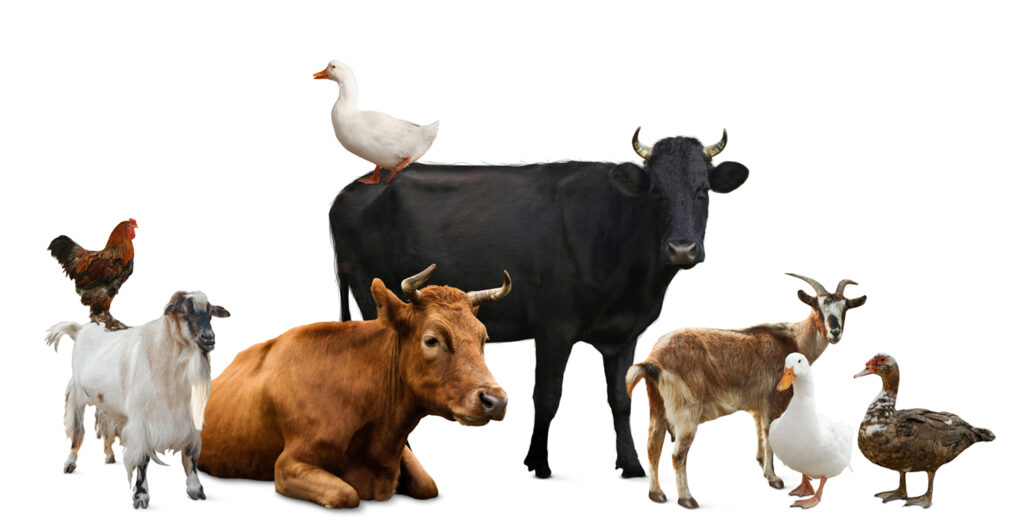
One Saturday afternoon, Ethan Williamson got a call from his best friend’s granddad, a 70-year-old farmer, who wanted to discuss a problem. It was a big problem. A 120-lb. problem to be exact.
Williamson, a 26-year-old associate veterinarian, treats small animals by day at a clinic in Myrtle Beach and farm animals across state and county lines after hours and on weekends, making him one of a growing breed of mixed-animal vets.
He makes farm calls and treats animals at his haul-in facility on the family farm in Evergreen, Columbus County, where he has two horses and raises brood cows. Farm animals are his passion but treating companion animals (pets) helps him to pay off his student loans.
A National Public Radio segment that aired in December 2022 reported that on average veterinarians leave school with nearly $190,000 in debt.

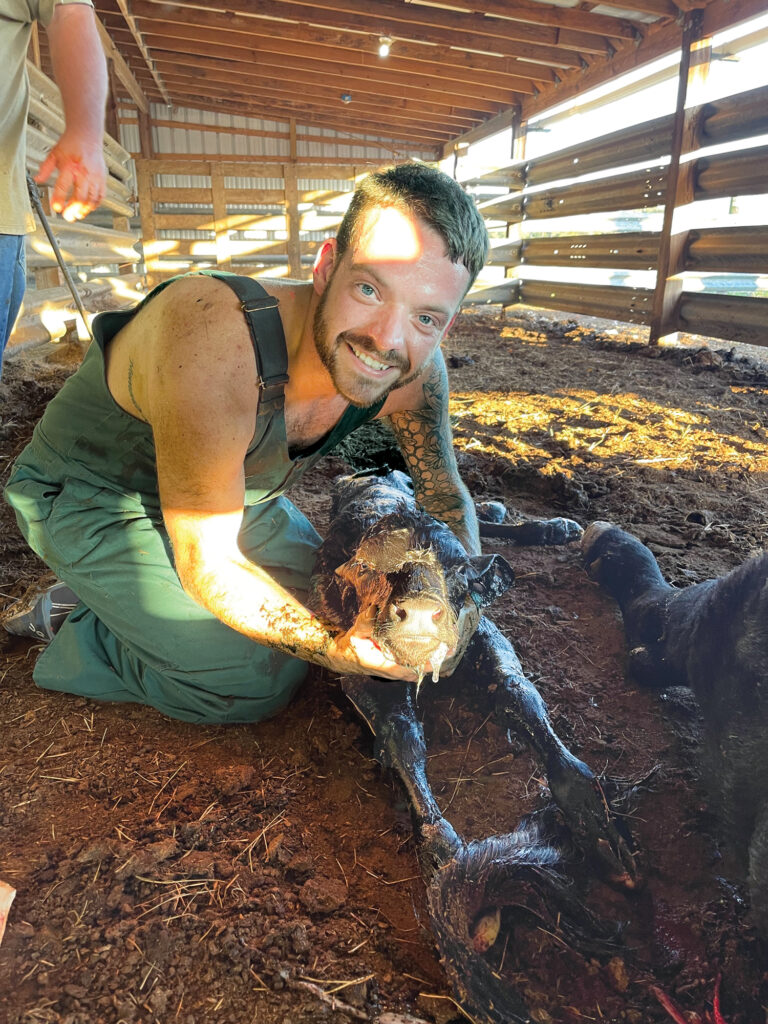
Christine Long is a Bolton, North Carolina, based mixed-animal veterinarian with 12 years’ experience and an established practice that she purchased in 2015.
“Student debt is just one factor that veterinary-school graduates face when considering first-job options,” Long says.
Unlike companion-animal veterinarians who work regular hours and rely on urgent care facilities for after-hour emergencies, farm-animal veterinarians are typically responsible for emergency care, which requires costly equipment and the willingness to accept an on-call way of life.
And then there’s the salary disparity. The American Veterinary Medical Association (AVMA) reports that the mean starting salary in 2021 for a farm-animal vet was about $85,000 vs. $100,000-plus for those specializing in pet care.
All these factors help to explain why so many veterinarians either concentrate on companion animals only, or a mix of companion and farm animals. AVMA statistics for 2023 show that more than 70% of veterinary school graduates go the companion-animal route, while less than 5% select mixed practices. Fewer than 4% opt to work exclusively with farm animals. The rest opt for advanced degrees or go into specialties including ophthalmology, pathology and surgery.
Those who choose to treat large animals do so because they love the work, the animals they treat, and the customers they serve.
“This career choice is hard, but so rewarding,” says Ginger Reagan, a Wilmington-based horse veterinarian who established her practice in 2005. Since she was 6 years old, Reagan knew that she wanted to become a horse veterinarian. She grew up competing on champion show horses and her daughter follows in her footsteps. The family has several retired horses.
“There are tons of horse farms in the Wilmington area,” she says. “Over the years we’ve had the privilege of working with some amazing horses, their foals and even their grandfoals. You get to know the families and to be a part of their milestones.”
Reagan’s staff of four DVMs (including Ginger) sees thousands of horses annually, providing care ranging from general wellness and reproductive care to sports medicine for performance/show horses and emergency care, which doesn’t always happen at a horse farm. Case in point: rescue efforts in the aftermath of Hurricane Florence in 2018.
“We were in airboats getting horses out of the water and to higher ground,” she says.
Barbara Thigpin, owner of Hanover Stables, a 50-acre horse training and boarding stable in Castle Hayne says she and her husband make use of a mobile vet, Coastal Carolina Equine Veterinary Services in Burgaw, Pender County. However, she says one of the practice’s veterinarians, Dr. Emily l. Brazik, lives just a couple of minutes from her house and it makes barn calls convenient. Dr. Jan T. Luqire lives in Pender County.
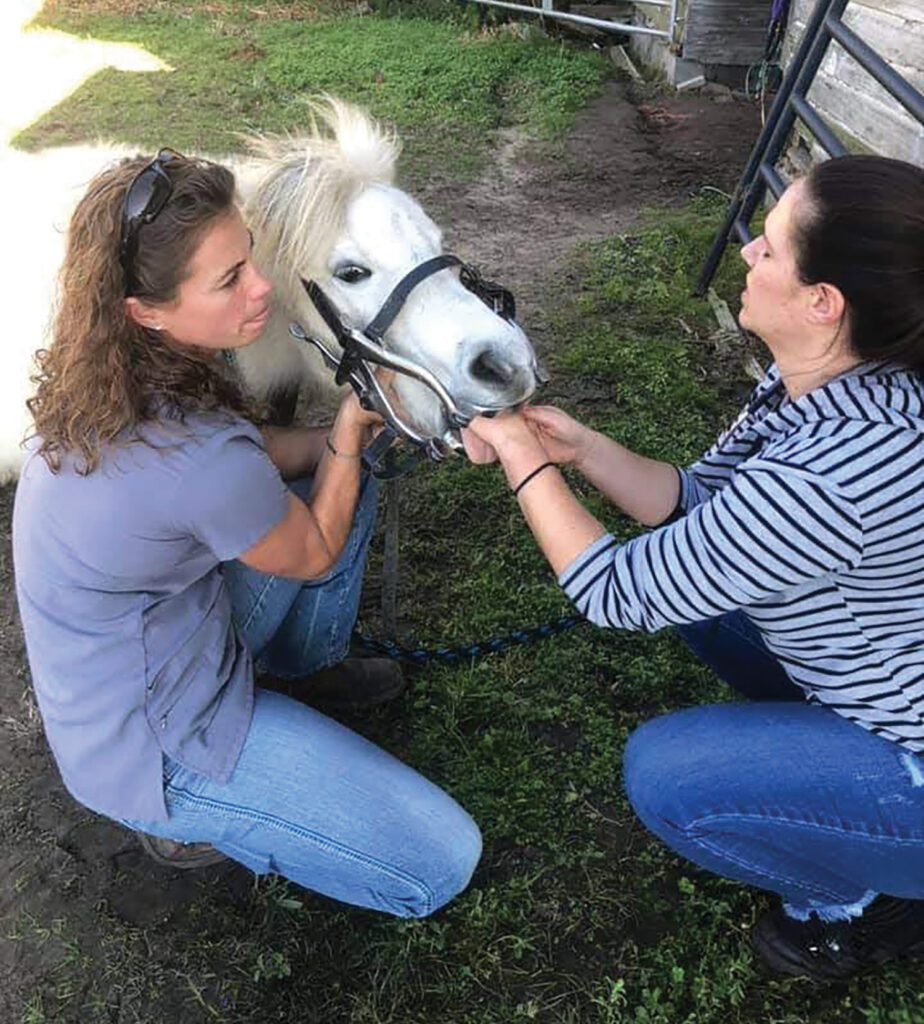
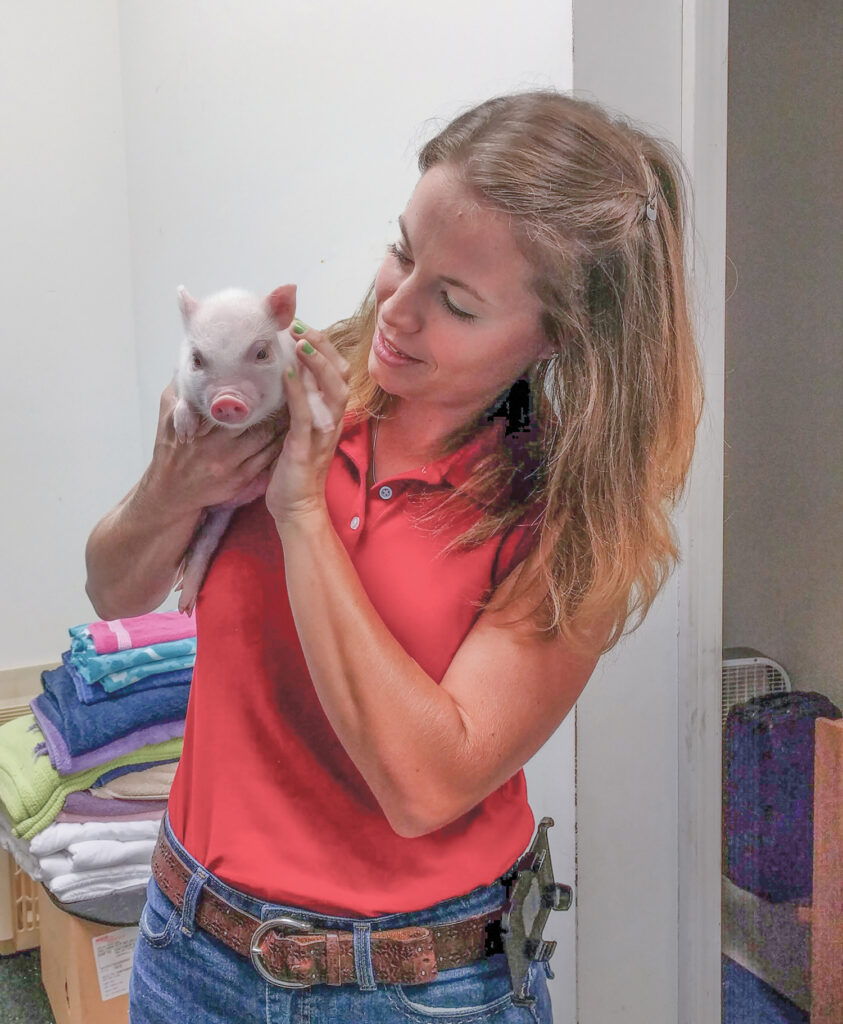
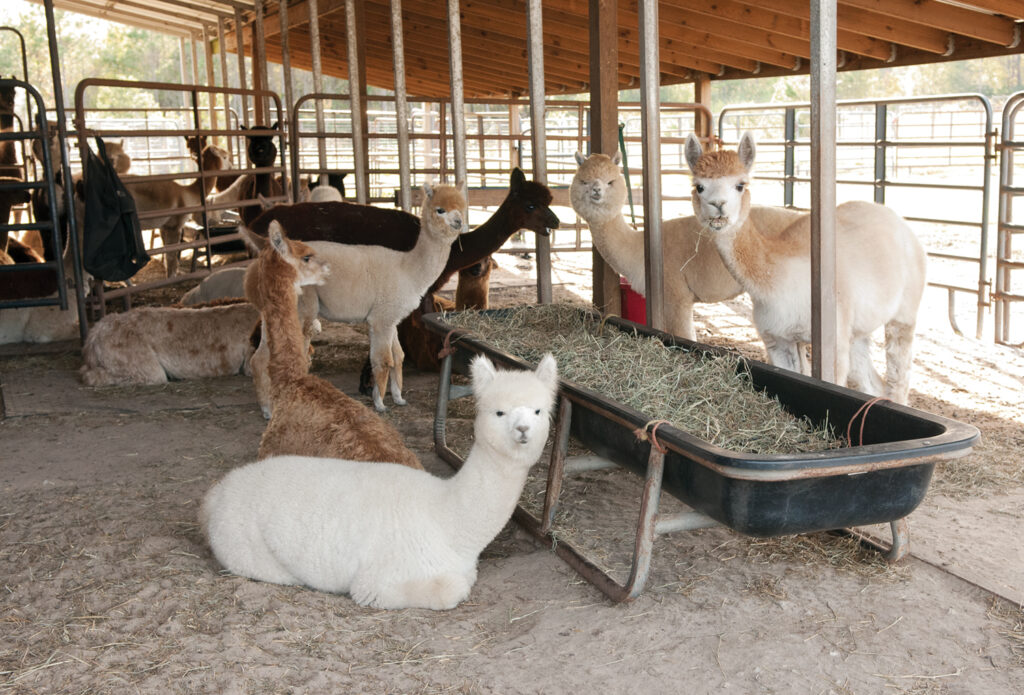
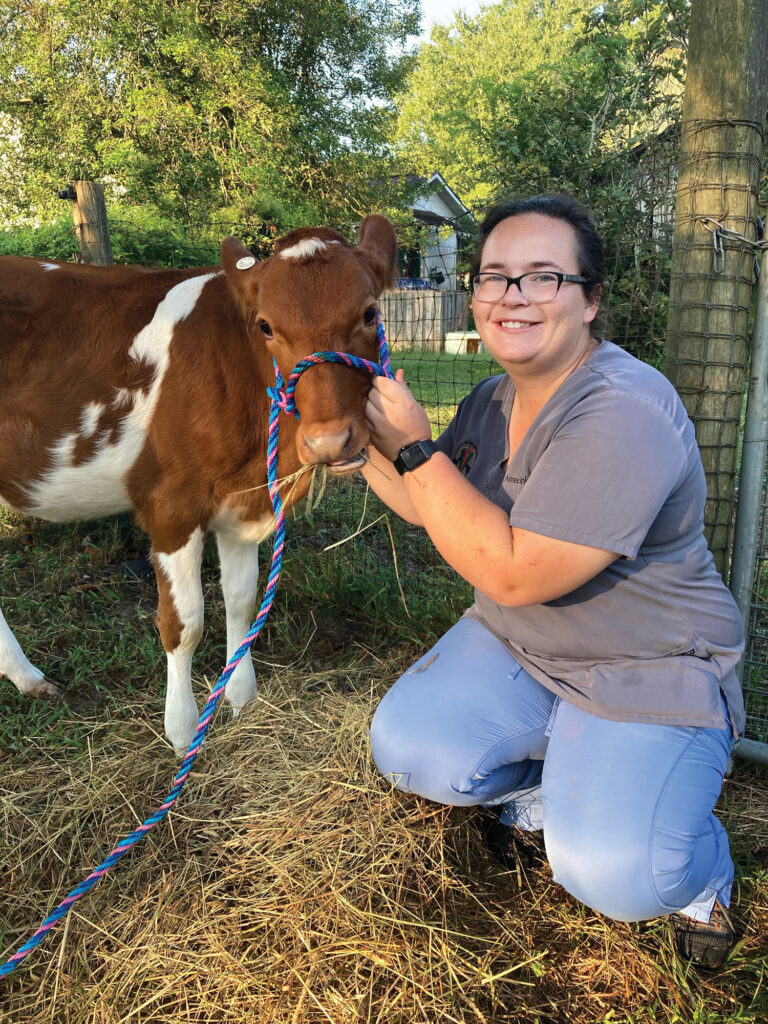
“They’re on call 24 hours a day. They’ve been able to handle anything our 60 horses have been able to throw at them,” Thigpin says.
Back to the farmer’s 120-pound problem, which turned out to be a larger-than-normal calf being born to a medium-size heifer. That’s heifer as in never-before-birthed-a-calf.
“The calf should’ve been 50 or 60 pounds, but it wasn’t. When it was pulled out it caused the momma to have a prolapsed uterus,” Williamson says. “When I arrived on the scene and saw what happened, I asked the farmer for some sugar, to which he replied, ‘This ain’t no time for baking a cake.’”
The farmer provided a 3-pound bag of white cane sugar, which helped shrink the uterus. He phoned his neighbors for additional bags of sugar. Thirty minutes and 15 pounds of sugar later, the inflammation subsided, and the uterus could be placed back in the heifer. After a few stitches, she rejoined her herd.
“When it was over, I was covered in sweat and juices,” says Williamson. “The farmer didn’t have a lot of money, so I left there that day with lots of garden vegetables, a little cash, and a promise that he would pay the balance when he had it. That’s typical because I consider what I do a service to the community. As for the momma cow, her stitches came out three months later and she made a full recovery. That’s what it’s all about.”
Long has her share of big-problem stories as well, including a call concerning an 800-pound sow, named Rosie, who had mobility issues.
Eight years ago, when Rosie was a young piglet, she fell off a commercial trailer and was found by a farmer who raised her. Because of her age (commercial sows aren’t intended to live that long) and her size, Rosie had severe joint pain causing her to spend most of her days laying down. Rosie was examined on her farm, where Long and her staff began a treatment regimen consisting of arthritis and alternative therapies and joint supplications.
“Today Rosie is walking better than ever,” Long says. “Even better than when she was 1 or 2 years old, according to her owner. That’s special to see.”
Long’s colleague Aimee Sink has a big-problem story involving a “sweet” alternative.
“We had to trim a large boar’s tusk that was as big as my hand because it was growing into the side of his face,” she says. “Because the boar was reluctant to ingest sedatives, we placed the drugs inside some Twinkies, which he happily ate.”
Stories such as these offer a glimpse into the diverse nature of the work performed by mixed-animal vets. While they may see 20 or more companion animals daily, they’ll typically treat fewer than five farm animals.
“It’s a lot more challenging to load a horse or cow in a trailer for transport to our facility than it is to bring in a pet dog or cat. Farm calls are a regular and more expensive part of our business,” says Long.
These large animal vets do what they can to make it easier to pay for their services.
“The vehicles we use to make farm calls are equipped for blood samples, diagnostic testing, and physicals for small animals. If a customer pays to have a large animal treated, and we’re already on the farm, we’re able to treat their pets as well as part of our service,” Long says. “In any one day, we could see horses requiring routine vaccinations or orthopedic evaluations, administer breeding soundness exams on bulls, and perform physical exams on goats, which for many have become the new dogs.”
Then there are the emergencies.
“These include lacerations, colic and dystocia. We treat small companion animals and common farm animals. We have even treated camels, kangaroos, prairie dogs, sloths, sugar gliders and zebras,” Sink says.
Long says it’s important for established veterinarians to serve as mentors. She partners with veterinarian medicine colleges at NC State, Virginia-Maryland, Mississippi State, the University of Georgia, and the University of Florida. She welcomes six to 10 unpaid externs annually to shadow her and her staff of four for one to four weeks.
Such efforts are also a part of Reagan’s practice, which partners with NC State and the Cape Fear Community College Veterinary Medical Technology program, while also offering opportunities for UNCW pre-vet students.
“Our externs observe procedures and how we work,” says Reagan. “We also train students with the time to serve as barn and veterinary assistants.”
The experience is interactive and helpful in preparing students to become horse vets.
“We pour ourselves into our student externs as we help them to better understand all that’s involved with treating large animals,” Long says.
Williamson was one of Long’s externs.
“We choose this work because of our passion for the animals and the friendships we form,” says Williamson, who recently spent a day on a cattle farm performing procedures and treating 85 calves. “The days are long, and the pay may be low, but it’s the close relationships with our clients that enrich us.”
Large Solutions for Large Patients
Cutting edge veterinary medicine
By WBM Staff
In October 2023, North Carolina House Bill 259 became law creating the Large Animal Healthcare Enhancement Fund. The purpose of the fund was to make grants to encourage veterinary students to enter and stay in large animal veterinary practice and support large animal veterinary practices in their respective counties. Permitted use of grant funds are veterinary school loan repayment and large animal veterinary equipment. The bill also created the Large Animal Health Care Enhancement Advisory Committee, which will include two members that are practicing large animal veterinarians.

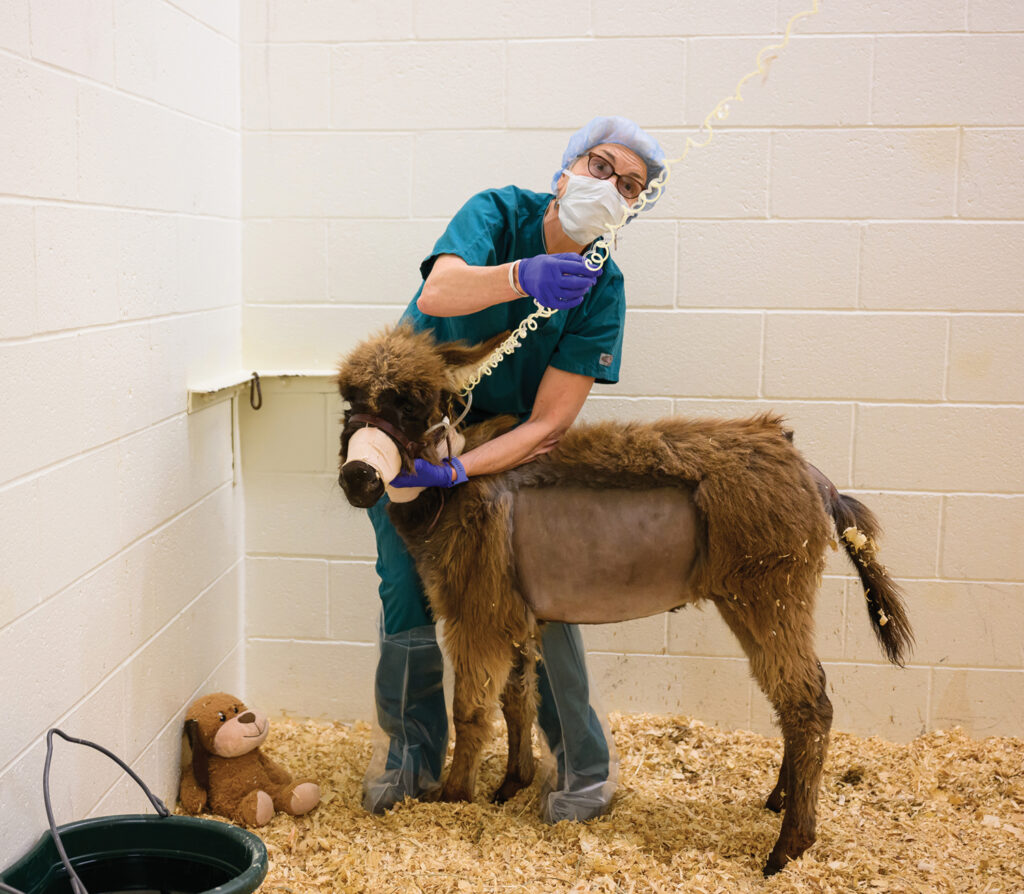
Also, in October 2023 the North Carolina state budget included $70 million for expansion and renovation of the College of Veterinary Medicine large animal hospital at NC State. The college was established by the legislature in 1978. This appropriation includes a new equine veterinary center for horses and livestock, an upgrade on the current facility. Included in that budgetary item was funding to increase the number of students the veterinary college can accept for each class from 100 to 125.
NC State’s Veterinary Hospital Equine and Farm Animal Veterinary Center offers 30 or more areas of specialization from dentistry to cardiology to clinical trials and gerontology. It treats more than 30,000 animals per year, from pets to the food animal industry, and offers emergency services.
NC State’s veterinary hospital in Raleigh with its Terry Center focuses on companion animals.
